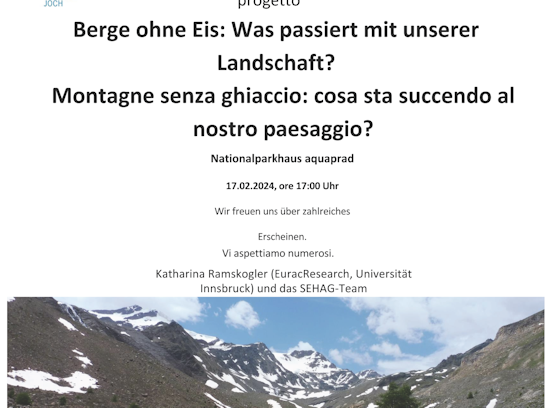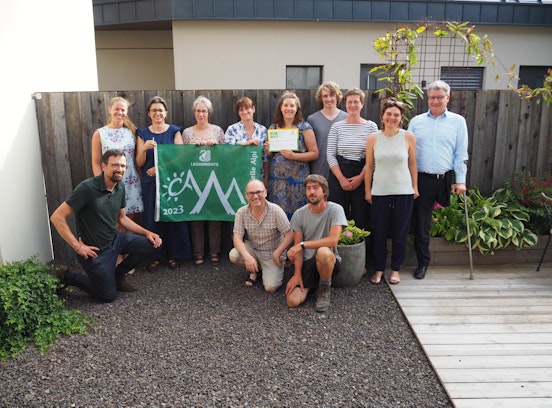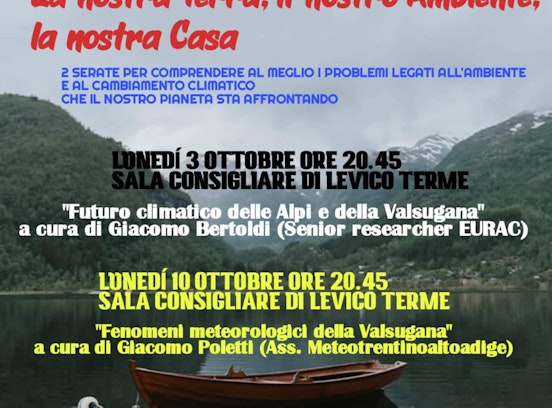Institute for Alpine Environment - News & Events - New alarm for alpine bird conservation: white-winged snowfinch at risk
New alarm for alpine bird conservation: white-winged snowfinch at risk
- Deutsch
- English
- Italiano
A new study, conducted by the Museum of Nature South Tyrol with the participation of Eurac Research and three other research organizations, based on genomics and published in the Journal of Biogeography provides alarming new information about the Alpine finch, a species threatened by climate and environmental changes: high inbreeding and limited population connectivity threaten the survival of the species.
Milan and Bolzano, Jan. 29, 2024. High-elevation bird specialists such as white-winged snowfinch, Alpine accentor and Rock ptarmigan are under severe threat from climate change and human-induced alterations to mountain habitats, such as increasing tourism pressure and related infrastructure. Due to these factors, areas with suitable habitat for them are progressively diminishing and fragmenting. A crucial point in assessing their long-term survival chances is the possibility of exchanging individuals (and thus genes) between different breeding areas. As habitats fragment, the presence zones become discontinuous, posing challenges in sustaining adequate gene flow. Notably, smaller peripheral populations may experience bigger impacts due to reduced immigration.
This little-studied aspect, which is fundamental to understanding what is happening and will happen to alpine species, was the subject of research carried out in collaboration between the Museum of Nature South Tyrol, the University of Milan, the University of Oulu, the Museo delle Scienze di Trento (MUSE) and Eurac Research. The results, just published in the Journal of Biogeography, reveal a worrying scenario for a species that is particularly representative of high altitude open areas, the white-winged snowfinch. Genetic analyses of dozens of specimens from different breeding sites in Trentino-Alto Adige and Lombardy revealed that the exchange of individuals between breeding sites (i.e. dispersal) is affected by the distance between them, with a sharp decrease starting at 20-30 km. In this sector of the Alps, many individuals remain to breed in the area where they were born: they therefore have a low propensity to disperse, which limits gene flow and population connectivity. In addition, high levels of inbreeding were observed: in fact, 20 percent of the individuals sampled were born to parents who were at least first cousins, if not more closely related. This suggests that dispersal in the population is already insufficient to ensure mating opportunities with unrelated individuals.
"These high levels of inbreeding are particularly alarming because they can lead to the expression of deleterious recessive mutations, reducing the probability of survival of individuals and their reproductive success. The combined effects of habitat reduction, poor dispersal, and the effects of inbreeding can easily lead to local extinctions that reduce the overall population size and the effective extent of the breeding range. In fact, local extinctions or large declines of this species have already been recorded in some alpine areas" comments Francesco Ceresa, ornithologist at the Museum of Nature South Tyrol and lead author of the study.
"High elevation-specialized birds are a real thermometer of what is happening in high-elevation environments. The results we have obtained are worrying and highlight the need for greater and closer protection of these environments" comments Petra Kranebitter, study coordinator and curator of the Zoology Department of the Museum of Nature South Tyrol. "For this reason, we will continue to monitor and study these particularly endangered species" Kranebitter concludes.
Mattia Brambilla, ecologist at the Dipartimento di Scienze e Politiche Ambientali, Università degli Studi di Milano and co-author of the paper, who has been involved in research on alpine avifauna for many years, emphasizes that these results "add new elements to the complex mosaic of effects of climate change on high-altitude species, which already includes range contractions, changes in foraging environments, changes in the phenology of species and the resources on which they depend, changes in interspecific relationships, and exacerbation of the impacts of human activities. The combined effect of all these factors, often greater than the sum of the individual elements, underlies the declines already observed and will become more pronounced in the coming decades".
The research project "Population Connectivity in High Elevation Birds Threatened by Climate Change" was funded by the Autonomous Province of Bolzano-South Tyrol/Department for Innovation, Research, Universities and Museums. Further contributions to this collaborative project have been published in Molecular Ecology and Journal of Avian Biology.









